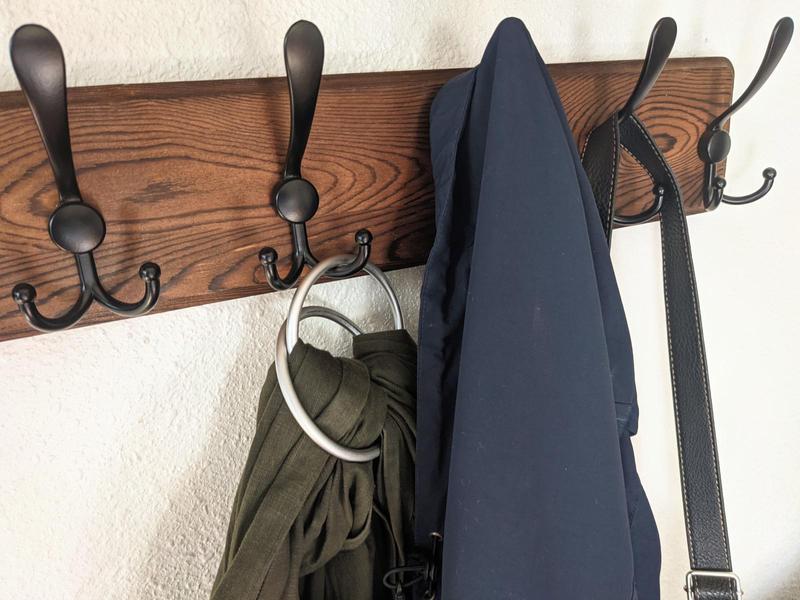
Making the Most of Our House with No Unused Space
Average middle-class American families use less than 40% of their floor plan (according to a UCLA study). Average housing sizes have more than doubled in the past sixty years, while family sizes have shrunk.
Think about your house. If you made a heat map showing the areas where you spend time, what would it look like? Would it look like the maps made during the aforementioned study, which showed hotspots around the kitchen table and around the TV in the family room, but very little use of dining rooms, porches, and other spaces?
Or would it be like my house—with little wasted space?

Optimizing our space
I think about that heat map a lot. Every time we dream about a bigger house on a larger lot (the all-too-common North Idaho "our own 10 acres!" dream), every time we complain about our organization, cleaning, noise, messes—would having more space fix things? Or would we end up with spaces we don't use?
One of my favorite things is rearranging our furniture into a more optimal configuration to ensure we're using our house in the best possible way for our family. We're definitely not afraid of rearranging the house to better suit our needs. Moving furniture doesn't take long and can make a world of difference.
Our recent garage and office organization project is a great example: we turned a pile of stress-inducing messes into a usable workspace and a quasi-basement, complete with carpet, pegboard, nicely-organized shelves, and a punching bag.
Recently, we moved the children's bunkbed from their room into our room, because they weren't sleeping in the other room anyway. (They prefer to sleep near us, and this way, I don't continually wake up at 3am with a child curled up on my feet.) I'm sure we'll move it back eventually. But for now, we've rearranged to accommodate their needs, to the benefit of everyone.

How do you choose what to change?
Start by examining your space. Walk the perimeter of your house, on the inside. Really look at every nook, every corner, every edge, every open space.
Where do you spend a lot of time? Do you have rooms you rarely go in? What would your heat map look like?
Which areas make you cringe as you walk past them? Where is dust piling up? What feels disorganized? Where are the piles of stuff you keep ignoring… or adding to? These are all good candidates for improvement.
For example, our office used to make me sigh and frown whenever I had to enter—it was less office and more giant closet with a desk half-buried in the corner. So, we built a custom-size bookshelf for the closet. We added lovely oak shelves along one wall. We got a nicer work desk and a big cabinet for storage. We organized everything, moved some stuff to the newly cleaned garage, and made it nice to walk in.
Another spot that caused me stress was our entryway. Coats, shoes, bags, piles of stuff, someone's shoes always in my way when I needed to find a hat or mittens or just sweep the floor… We had one stand-up coat and hat stand that was always too full. So I got a couple shelves for the wall to hold keys, wallets, and other miscellaneous small objects. We hung two rows of hooks for coats and bags (one smaller, and lower, for the kids to reach), and moved the hat stand to the side. I removed unnecessary clutter by putting away all the shoes and outdoor gear that were out of season, instead of letting them pile up. And now it's so much better.
I put a project table for my sewing machine and rag rugs into a corner behind our couches in the living room. We hide extra kitchen stuff in a bin under our makeshift folding table island (we'll upgrade the island someday). The kids' play kitchen is in an otherwise awkward and hard-to-use corner of the living room, by our bookcases. And so on. All of our indoor space is used, regularly, for play, work, or easy-access storage. Our heat map, while concentrated in the kitchen and living room, would be fairly evenly distributed.
Use the outside, too
We are trying to apply the same principles to our yard, though outdoors we have more room for improvement. Our front yard, for example, is under-utilized. The kids can't play there without close supervision due to the road we live on. We've scheduled a fence to be put in, which will greatly increase the usability. We also plan to add a fruit tree or two and some garden beds or edible perennials along the fence.
We also have a rocky area along one side of the house that occasionally is used for play, but not as much as the rest of the backyard. I've been thinking that would be a good spot for an extra shed (to use as an office or workshop), or a small playhouse for the kids. We'll see.
Take a walk through your own yard. What areas do you use? How can you make the under-used spaces more useful and appealing—e.g., by adding fences, landscaping, gardens, play structures, patios, a fire pit, trees, or other features?
Putting time into optimizing your space is always worth it.

Why Watching My Parents Cook Means I Can't Share Soup Recipe—And How I'm Encouraging My Kids to Cook Too
